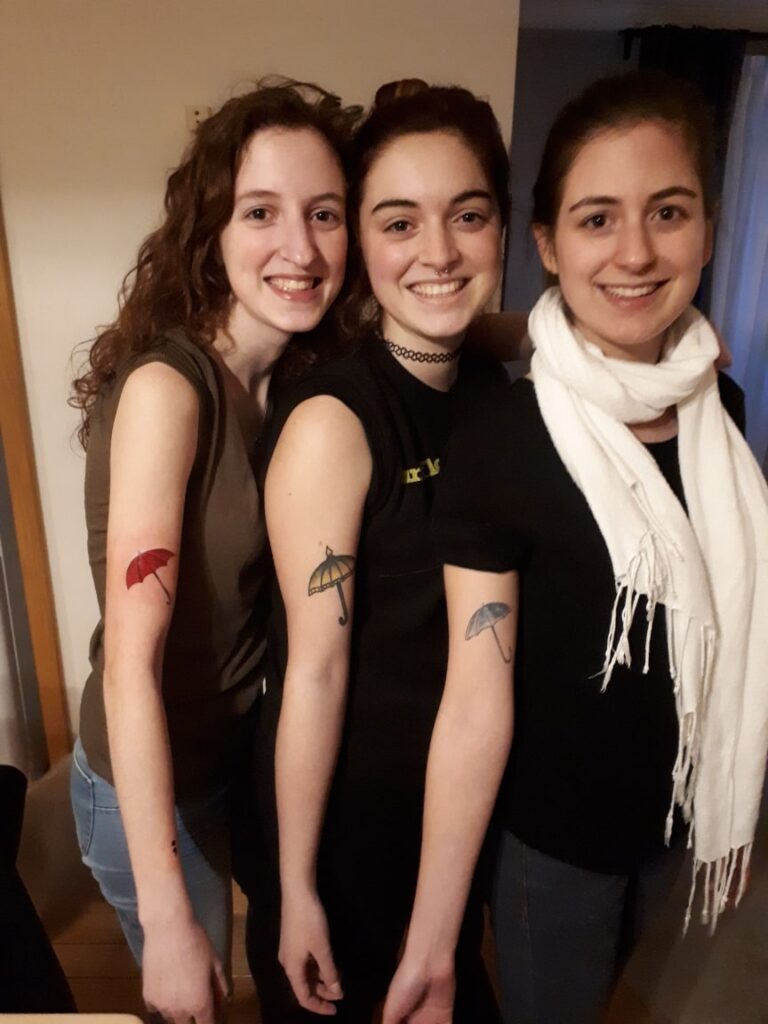Many Canadians experience the debilitating and life-changing effects of a rare disease from an early age—two thirds of rare disease patients are children. Audrey Lagacé, for example, was diagnosed with aplastic anemia when she was only five years old.
Aplastic anemia is a rare and serious blood condition that develops when a person’s bone marrow cannot make enough new blood cells to help the body work normally. The exact cause of aplastic anemia is unknown, but chemotherapy, radiation and exposure to certain chemicals can make a person more prone to developing the disease.
“Doctors didn’t know why I developed the disease,” Audrey explains. “But I might’ve been exposed to mould when I was a baby and that could have something to do with it.”


One life, two diseases
Audrey’s family noticed that she was pale and would bruise easily as a young girl. Her aunt, a nurse, encouraged Audrey’s parents to bring their child to the doctor, worried that she had leukemia. A series of blood tests revealed that her red blood cells, white blood cells and platelets were low.
“One of my first memories is going to the children’s hospital in Montreal,” Audrey reflects. “I remember meeting my hematologist there.” Doctors performed a bone marrow biopsy and confirmed that she did not have leukemia. The culprit was aplastic anemia.
Treatment for this rare disease requires a bone marrow transplant. Unfortunately, Audrey’s doctor found no matching donors at that time. The only alternative treatment was an immunosuppressive drug that took about three to six months to take effect. “I was hospitalized quite a bit during that time,” recalls Audrey, “so I had to miss school often.”
The treatment sent Audrey into remission after a few months; however, her blood cell counts never fully went back to normal. She had recurring infections for the remainder of her childhood and adolescence.
Audrey became quite sick with the flu at 13. But it wasn’t all she had. On the night when she became ill, she noticed that her urine was dark brown. “I was in the hospital for about eight days with very low blood cell counts,” Audrey says. “Because of my aplastic anemia and the colour of my urine in particular, doctors knew which tests to run this time.”
The results came back five days later. Audrey had developed Paroxysmal Nocturnal Hemoglobinuria (PNH), a sister disease of aplastic anemia. The disorder kills and inhibits the normal production of healthy blood cells, bringing sudden and recurring symptoms that are triggered by infections or physical exertion. PNH also increases a person’s risk of developing leukemia.
“It didn’t help that I was a teenager,” Audrey says. “I ignored the signs and symptoms. I wasn’t taking it seriously whatsoever and was in denial.” For the next three years, Audrey would be hospitalized at least once per year for different infections. Then her hematologist started her on a new medication for PNH.
Living a purposeful life
The medication ultimately helped Audrey live a mostly normal life. “It improved my health and quality of life a lot,” Audrey recalls. “I decided to study nursing after I finished high school. My many stays in the hospital inspired me to give back to patients.”
Audrey started nursing school when she was 19. While her physical health was under control, her mental health told a different story. “I didn’t want to tell anybody that I was sick,” she acknowledges. “I didn’t want people to treat me differently. I suffered terrible anxiety, but it helped me understand that mental and physical health are totally related.”
With that realization, Audrey sought help to manage anxiety and depression. Therapy and support from family and friends helped her focus and kept her mood stable. “Being in nursing school helped me get to know my disease. But it wasn’t until I cared for my mental health that I finally learned to accept my disease and be open about it. Being honest with others helped me be more in tune with my body.”

Coming full circle
Audrey went on to finish her nursing degree. Now at age 27, she is a health professional who cares for many patients with rare blood diseases like hers. “I’m really happy working in hematology and oncology,” she says. “I feel like I bring first-hand experience to my patients that other nurses who are healthy cannot. I know how traumatizing biopsies and tests can be. So, I’m a strong patient advocate who tries to be as positive as I can.”
Audrey’s journey with a rare disease started more than 20 years ago. Today she acknowledges that her only other chance of making a full recovery is through a bone marrow transplant—a procedure that comes with potentially serious side effects like leukemia. She doesn’t think it’s worth the risk at this stage of her life.
“If I can just stay stable and healthy with my current medication, that’s what I’ll do,” she explains. “If I didn’t have the medication, I probably wouldn’t be able to work at all. I might not still be here. It’s incredibly nice that I can keep having a pretty good quality of life while caring and advocating for patients who are going through something similar. It brings out my best energy.”
- Visit the Aplastic Anemia and Myelodysplasia Association of Canada and the Canadian Association of PNH Patients to learn more about the disease.
- Read the stories of other patients.



